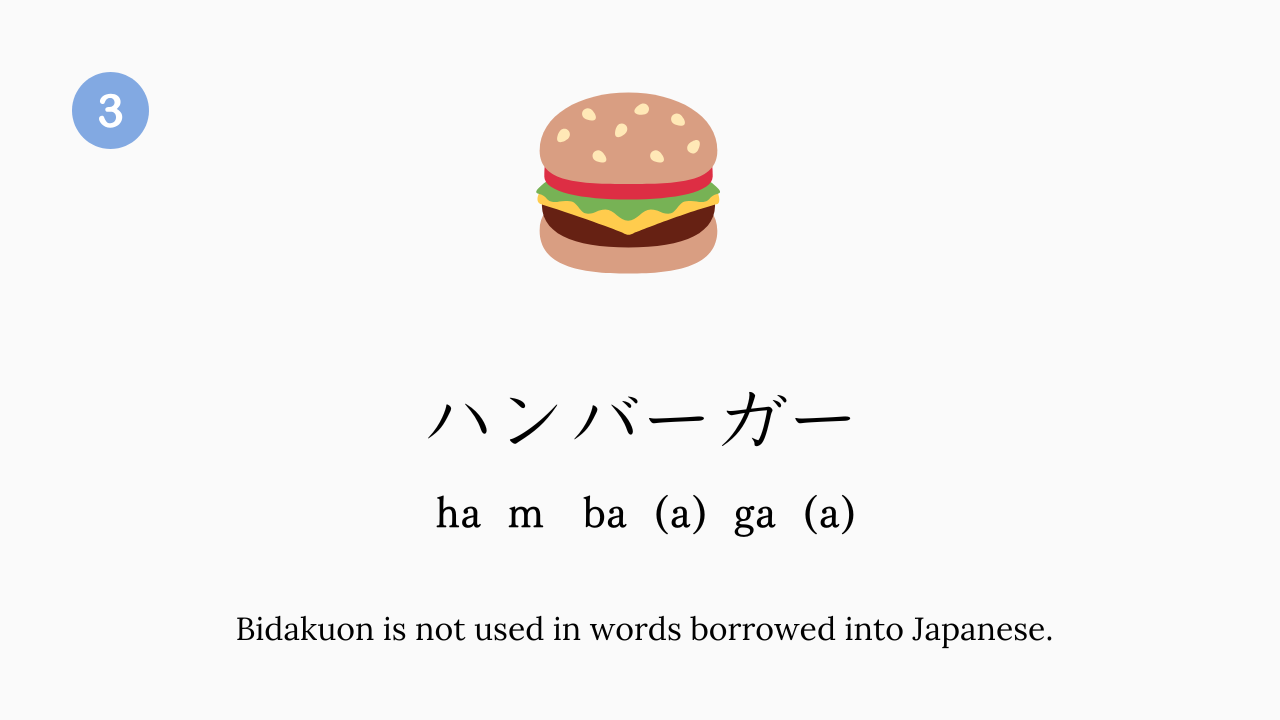When to Pronounce が as "ga" vs "nga" in Japanese | Dakuon & Bidakuon Explained
Understanding Japanese Pronunciation: Where Bidakuon Fits In
🎥 Prefer watching instead of reading?
The video version of this lesson is right above—complete with real pronunciation examples!
Japanese pronunciation may seem straightforward at first—each kana corresponds to a specific syllable, and most learners are taught that pronunciation is consistent and rule-based. But as you go deeper, you’ll discover nuances that native speakers follow naturally but that aren't always explained in textbooks.
One of the most fascinating examples is the difference between dakuon (voiced consonants) and bidakuon (nasal voiced consonants). These small distinctions, like whether to pronounce が as “ga” or “nga,” can affect the rhythm and naturalness of your spoken Japanese—and are especially important for learners aiming to sound more fluent, polished, or native-like.
1. What Are Dakuon (濁音) and Bidakuon (鼻濁音)?
Dakuon are voiced consonants. That means your vocal cords vibrate when you say them.
Bidakuon, also voiced, are a special group of sounds called velar nasals—like the "ng" in “sing” or “king.”
In written Japanese, both are marked with the tenten (゛) symbol. However, bidakuon are sometimes represented with a maru (゜) in dictionaries only to distinguish them.
Here’s how voiceless kana become dakuon:
Even though "h" doesn’t transform into "b" in English, in Japanese phonetics this is how the は行 (ha row) behaves.
2. Why Does が Sometimes Sound Like “nga”?
The “nga” sound is a bidakuon—a velar nasal (ng). While がぎぐげご are normally pronounced with a “ga” sound, in specific cases, they’re pronounced “nga, ngi, ngu, nge, ngo.”
English example:
The nasal sound “ng” occurs in English words like:
sing
king
thing
In Japanese, this pronunciation depends on position and word type.
3. When to Use Bidakuon Pronunciation (nga, ngi, ngu…)
According to the NHK Japanese Pronunciation Dictionary, here are the general rules:
❌ Don't use bidakuon when が is the first sound in a word
✅ Do use bidakuon when が is not the first sound in a word
✅ Do use it when が is the first sound in a non-first word in a compound
❌ Don't use it in loanwords (words borrowed into Japanese)
Note: There are always exceptions.
Cultural Note:
Regions like Tohoku use bidakuon more frequently.
Older speakers are more likely to use them than younger speakers.
Newscasters and radio hosts are taught to use them properly.
4. Examples: “ga” vs “nga”
Even though some people pronounce めがね as “megane,” “mengane” is considered standard by the NHK guideline.
5. Summary: Guidelines for Bidakuon Use
Here’s a quick recap of when to pronounce がぎぐげご as “nga ngi ngu nge ngo”:
❌ Don’t use when it’s the first sound in a word
✅ Use when it’s not the first sound in a word
✅ Use when it’s the first sound in a non-first word in a compound
❌ Don’t use in loanwords
Usage is declining, but it’s still helpful to recognize and understand the pattern—especially if you're aiming for natural or broadcast-standard pronunciation.
Final Thoughts on Improving Japanese Pronunciation
Mastering subtle pronunciation features like bidakuon can feel overwhelming at first—but they play a major role in sounding more natural, confident, and culturally aware when speaking Japanese. Even if bidakuon aren’t used in every region or generation, understanding when and why they appear will boost both your listening comprehension and speaking clarity.
If you're serious about improving your pronunciation, don't stop here. Japanese has many hidden rules—like pitch accent, rendaku, and rhythm—that aren’t obvious in romaji or standard textbooks.
Want a step-by-step guide to sounding more natural in Japanese?
Check out Japanese Phonetics 101 or sign up for my free Japanese pronunciation workshop to get started.
最後までご覧いただき、ありがとうございました!
Want to learn more about Kokoro Communications and the services we offer?
Home | About | Services | Contact Us









